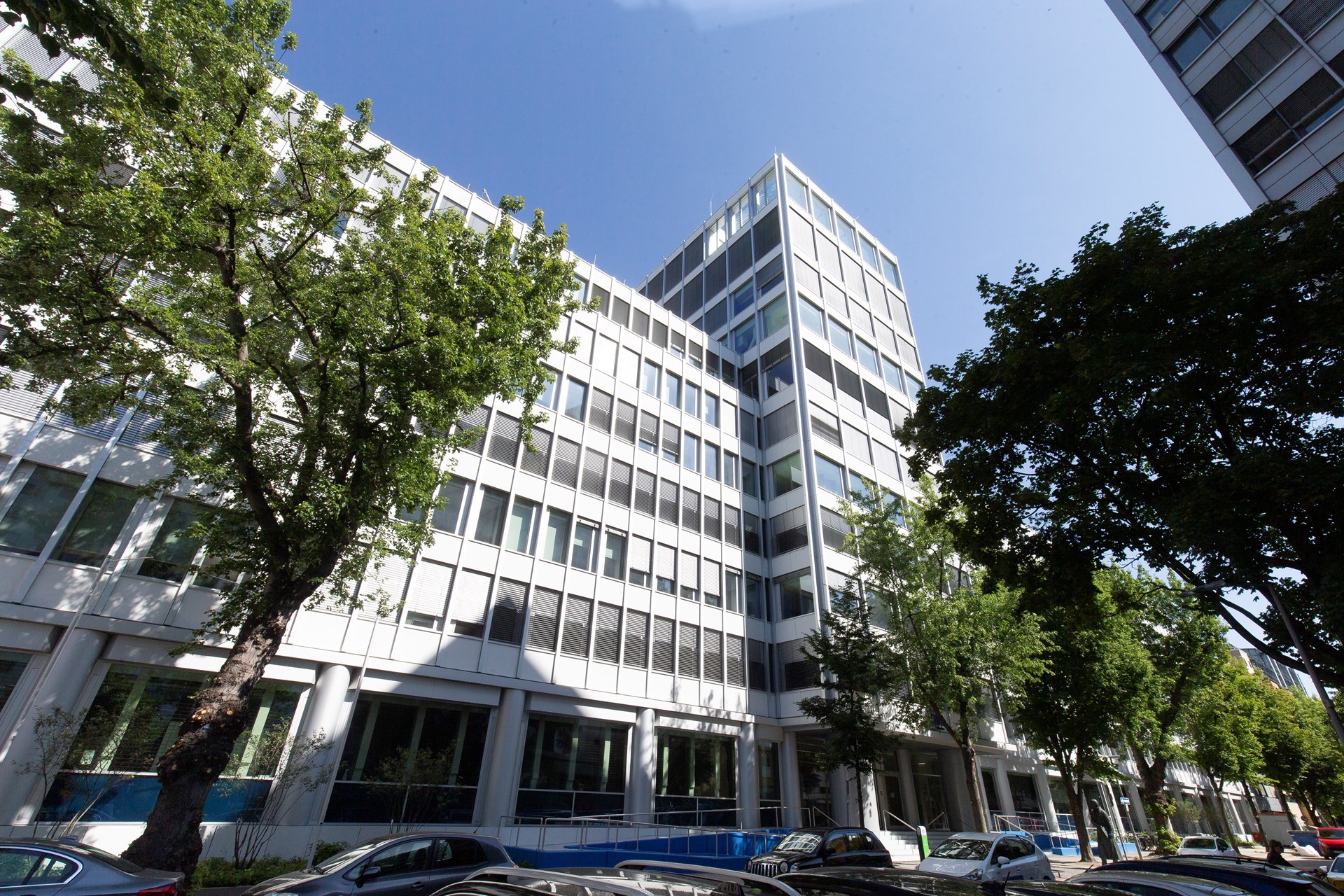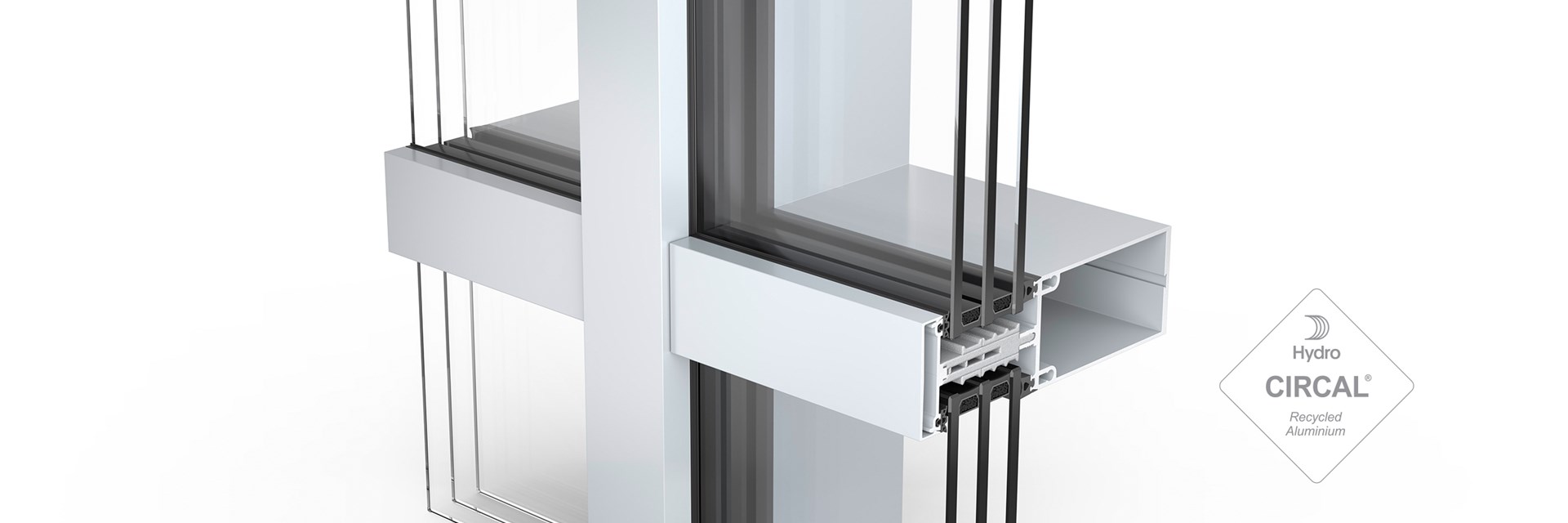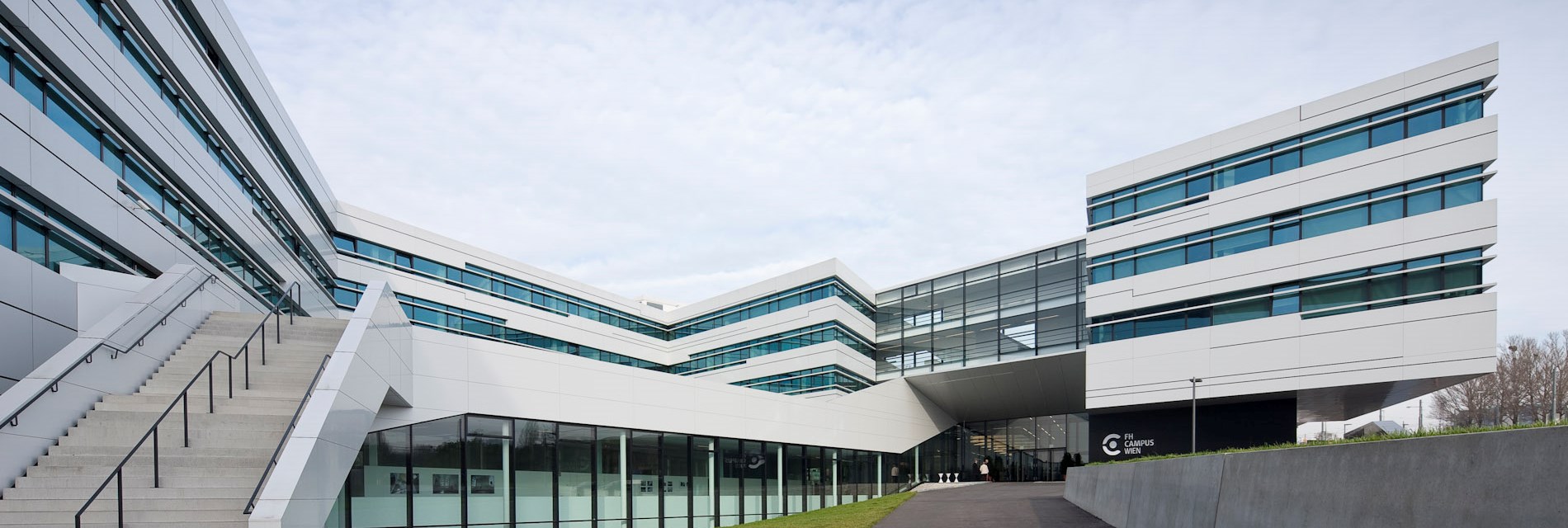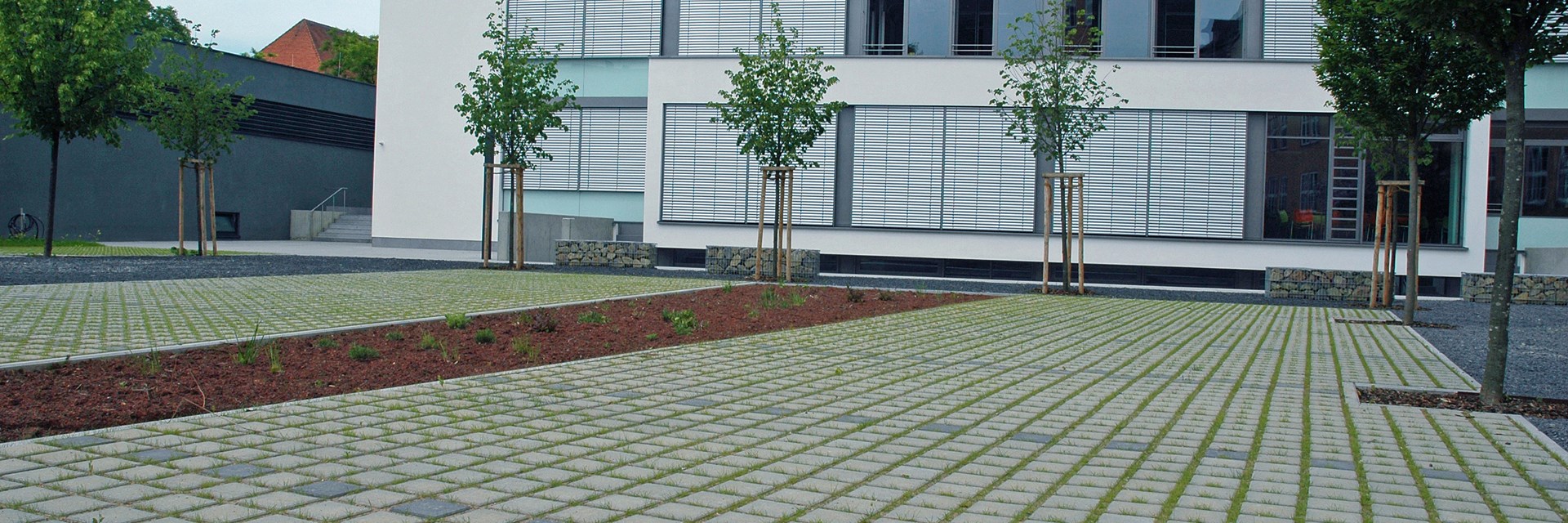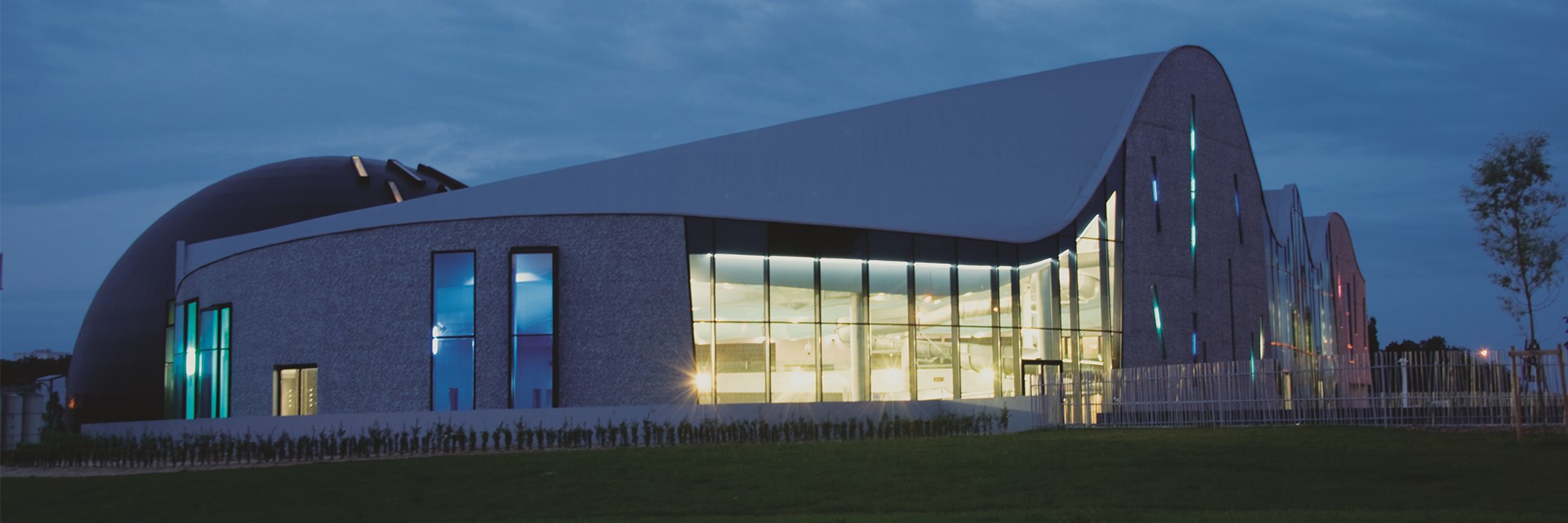PROJECT DETAILS
A refurbishment far above standard: The DIN Standards Institute in Berlin is fitted with an innovative glass/aluminium façade.
The administrative building of the renowned DIN Institute in Berlin, which is around 50 years old, recently underwent extensive renovation and reconstruction. One of the main components of the modernisation project was the redesign of the building’s outer shell. Based on the designs of the Berlin-based Kim Nalleweg architect firm, the metal construction experts at Medicke GmbH developed and produced an innovative mullion-and-transom façade construction - made from WICONA's sustainable Hydro CIRCAL aluminium alloy - especially for the project. Custom-made elements made of fibre-reinforced concrete are also used.
Architectural concept
The German Institute for Standardisation (Deutsches Institut für Normung e.V. - commonly known as the DIN Institute) is the independent platform for standardisation in Germany and worldwide. In 2017, the institute, located in Burggrafenstraße in the Tiergarten district, celebrated its 100th anniversary. Since the office complex from the 1960s no longer met the requirements of a modern working environment and was also no longer up to date in terms of construction and energy, the management decided to have it extensively modernised. This included completely renewing the building's façade. The Berlin-based architectural firm Kim Nalleweg Architekten designed a façade solution that harmoniously brings together the different structures of the existing complex while incorporating the exposed office tower in an appealing way. By reinterpreting and updating motifs of the previous façade, its integrity has been preserved while achieving a neat arrangement at the same time. Last but not least, the different parts of the building - the high-rise and the horizontal structures along the street - are visually calmed and unified by adopting the same façade materials combined with differing construction and proportions. The chosen aluminium-glass façade solution creates a modern, minimalist style of architecture. At the same time, the narrow window profiles all around increase the amount of daylight entering the building, even in the area in front of the façade supports, compared to the existing façade, thus ensuring maximum transparency. The motifs of the outer shell are also consistently continued in the interior design concept. As a result, the approx. 660 employees of the institute can look forward to a bright and friendly interior with open-plan areas and workplaces that can be used flexibly.
Façade design and construction
The task of redesigning or replacing the façade was entrusted to the experienced metal construction specialist Medicke GmbH. "The project involved modernising the façade with regard to all technical parameters. In addition to aluminium and glass, we also used completely new materials such as fibre-reinforced concrete," explains Managing Director Marcus Medicke.In view of the numerous requirements in terms of comfort, technology, durability and costs, the planning architects brought the team from Medicke GmbH on board at an early stage and worked closely with them and the experts from WICONA to develop the solution that was finally created: a thermally separated mullion-transom construction - made from the sustainable aluminium alloy Hydro CIRCAL (see info box). This was designed to be installed throughout all floors as a uniform layer in front of the existing shell and meets all building physics, energy and aesthetic requirements. The windows consist of triple fixed glazing. Opaque ventilation flaps are integrated into the side of the window profiles to provide a manual ventilation option in addition to the planned mechanically operated ventilation.
Specially manufactured elements made of fibre-reinforced concrete - produced by a partner of Medicke GmbH in Saxony are used for the outer parapet bands. With their blue glass components, these are reminiscent of the original façade of the DIN building and create a very special look. The façade panels are fitted with undercut anchors and mounted on horizontal aluminium crossbeams. These, in turn, are connected to the aluminium posts by means of cantilevered aluminium abutments, which are insulated from each other thermally. On the outside, protection from the sun was achieved by means of textile ZIP screens, which can withstand high wind speeds of up to 120 km per hour. The screen roll, which is operated by an electric motor, was invisibly accommodated in an aluminium housing between the mullion-transom construction and the concrete parapet.
Assembly and installation
All installation work was also carried out by Medicke GmbH. As Marcus Medicke explains, "Based on our good experience in previous projects, we started the installation at the top to ensure that the parapet connection was watertight. Then we worked downwards, floor by floor. This allowed the rainwater to be channelled down the new façade in front of the old shell." Only after completion of the mullion-transom construction were the sun protection screens and the horizontal cast stone parapet strips hung in front. This made it possible to avoid overlaps between the various work groups involved in the installation process and the waterproofing of the building.
Working together in partnership
The customer, the employees of the DIN Institute and those involved in the construction were all equally impressed by the innovative façade solution - standardised aluminium system profiles as a new layer in front of the existing shell. Planning, production and assembly are running according to the previously defined time and budget, which Marcus Medicke puts down in particular to the close cooperation between the partners involved. "There was detailed cooperation on all questions concerning the façade even before the contract was awarded. The earlier we are allowed to contribute our expertise to the façade design, the more beneficial this becomes for the entire planning and construction process."
Sustainable: Recycled aluminium
Hydro CIRCAL is a sustainable aluminium alloy that consists of at least 75% recycled end-of-life aluminium. This can be, for example, discarded scrap from facades and windows that have been dismantled from buildings and fully recycled. The production is independently certified according to ISO 14064 and fully traceable.



